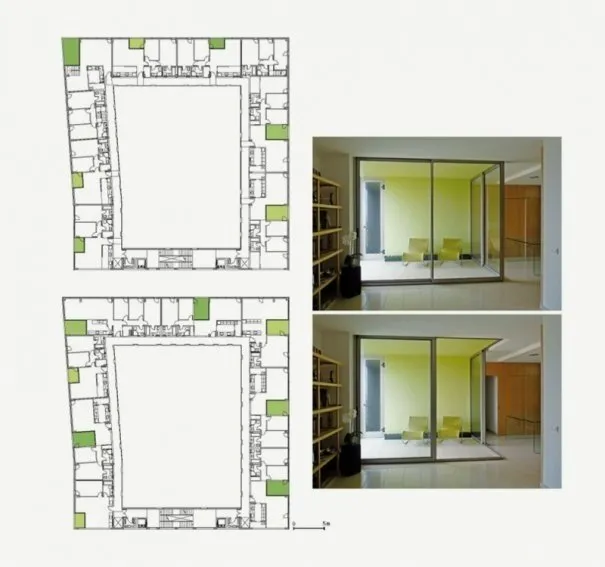There can be your advertisement
300x150
How to Save on Utility Payments
Monthly expenses on housing and utility services are a significant expense. Many would like to pay less but don't know how to do it. Experts from the company "Metrium" share simple and effective secrets of saving.
Natalya Kruglova is an expert. General Director of "Metrium Group", a real estate and consulting company operating in the Moscow region.
Reviewing the Payment Document
Management companies often include services in bills for which tenants already pay. For example, they add cleaning of the entrance hall, greening of the courtyard, replacement of risers. All this is already included in the item "maintenance and repair of living spaces", so make sure that such lines are not present in the bill.
Disabling Unnecessary Services
We often pay for services we don't use. The most common ones are "radio and alerting" (99.12 rubles per month) and "TV antenna" (204 rubles per month). Over a year, this adds up to 3,637 rubles. Removing unnecessary lines from the bill is simple.
To stop paying for radio and alerting, visit a government services center with your passport and pay 60 rubles. To disconnect the TV antenna, the property owner must visit a Rostelecom office with their passport and a copy of the state registration certificate of rights.
Installing Water Meters
Owners of apartments without meters pay 1.5 times more for water than usual. For example, a family used 20 cubic meters of cold water in one month. With a meter, they would pay 354 rubles, without a device - 531 rubles.

Installing meters is simple: just ask your building's management company for a list of licensed contractors and contact them. Specialists will install the devices, seal them, and prepare and sign a three-party act of commissioning the equipment into operation.
Repairing Plumbing
In a year, just one leaking tap or tank can leak about 8,000 liters of water. At current tariffs, this is around 300 rubles. Therefore, it makes sense to fix plumbing immediately when the malfunction is noticed.
Replacing Taps
You will save if you replace regular taps with mixers with handles. While we turn two valves to set the temperature, about 5 liters of water flow down the drain. This is an extra ruble spent for just washing hands once.

Another way to save water is to install an aerator. This small mesh fitting mixes water with air and thus reduces the flow rate. In normal mode, about 15 liters of water flows out of a tap per minute, and with the fitting, the consumption is halved.

There are also water-saving showerheads that work on a similar principle. The cost of a regular aerator is about 80 rubles, and a showerhead is around 500 rubles. The costs pay off in a couple of months.
Replacing Electricity Meters
In Russia, there are single-, dual-, and three-tariff electricity meters. In the first case, the meter multiplies consumed kilowatt-hours by the standard tariff (in Moscow - 5.38 rubles per kWh). In the second and third cases, it also accounts for time of day.

It is more beneficial to install a multi-tariff meter that records energy consumption during the most expensive peak hours (from 07:00 to 10:00 and from 17:00 to 21:00), more affordable semi-peak hours (from 10:00 to 17:00), and cheap nighttime hours (from 23:00 to 07:00).
Redistributing household appliance use to semi-peak and nighttime hours can reduce bills by 20–30%. To replace meters, follow the same procedure as for installing water meters. The cost will be around 5000 rubles.
Unplugging Appliances from the Power Supply
Chargers and household appliances plugged into sockets are often called passive consumers. They use electricity even in sleep mode. A kettle left plugged in uses no more than 5 rubles a year, but as they say, a penny saves a ruble.
Purchasing Energy-Saving Bulbs
Energy-saving bulbs consume 80% less electricity than regular ones and last about three years. Manufacturers even offer a one-year guarantee: if the bulb burns out within the first 12 months of use, it can be returned to the store (as long as you keep the receipt and packaging).

Energy-saving bulbs come in fluorescent and LED types. It's better to buy the latter. They immediately light up at full power, and they don't contain mercury, so these bulbs can be thrown away with regular trash (they do not harm the environment).
Using Eco-Modes
Modern washing machines and dishwashers have special energy-saving operating modes. If there is no eco-mode in a washing machine, just set a low temperature: 30–50 degrees is enough to clean clothes, and the savings are significant.

More articles:
 4 Mistakes That All Beginning Designers Make
4 Mistakes That All Beginning Designers Make Design of a Small Bedroom: 5 Examples + Great Products
Design of a Small Bedroom: 5 Examples + Great Products How to Avoid Mistakes When Choosing a Designer: Anna Muravyova's Opinion
How to Avoid Mistakes When Choosing a Designer: Anna Muravyova's Opinion How to Ruin a Technical Specification and Say Goodbye to Your Project
How to Ruin a Technical Specification and Say Goodbye to Your Project Perfect Kitchen: How to Choose a Countertop?
Perfect Kitchen: How to Choose a Countertop? How to Create a Stylish Interior Design?
How to Create a Stylish Interior Design? Home Office Repair: 5 Mistakes to Avoid
Home Office Repair: 5 Mistakes to Avoid 5 Floor Plans That Won't Work in Russia
5 Floor Plans That Won't Work in Russia